 |
 |
 |
| |
SECOND ANTIRETROVIRAL THERAPY REGIMEN IN VIREMIC PEOPLE WITH HIV IN THE US, 2008-2018
|
| |
| |
CROI 2021 March 6-10 Reported by Jules Levin
Thibaut Davy-Mendez1, Sonia Napravnik2, David A. Wohl2, Ellen F. Eaton3, Richard Moore4, Edward R. Cachay5, Katerina Christopoulos1, George A. Yendewa6, Kenneth H. Mayer7, Mari M. Kitahata8, Joseph J. Eron2, for the Centers for AIDS Research Network of Integrated Clinical Systems
1University of California San Francisco, San Francisco, CA, USA, 2University of North Carolina at Chapel Hill, Chapel Hill, NC, USA, 3University of Alabama at Birmingham, Birmingham, AL, USA, 4The Johns Hopkins University School of Medicine, Baltimore, MD, USA, 5University of California San Diego, San Diego, CA, USA, 6Case Western Reserve University, Cleveland, OH, USA, 7The Fenway Institute, Boston, MA, USA, 8University of Washington, Seattle, WA, USA
Background: Improvements in antiretroviral therapy (ART) have reduced first- line virologic failure rates, but little is known about prescription patterns and outcomes of subsequent ART in the US.
Methods: Among patients who first initiated ART in 7 HIV clinical cohorts 2008-2018, we examined patients who initiated second ART, defined as a new anchor antiretroviral (ARV) agent >8 months after initial ART start while viremic (latest viral load [VL] >200 copies/mL in past 90 days). We estimated time from second ART initiation to virologic failure (VF), defined as the first VL >200 copies/mL after 24 weeks, stratified by demographic and clinical characteristics, using Kaplan-Meier methods and log-rank tests.
Results: Of 705 eligible patients (75% cisgender men, 23% cisgender women, 54% Black, 31% White, 12% Hispanic), most first initiated ART prior to 2011 (54%) and with an NNRTI- (47%) or PI-based (29%) regimen. The median time between first and second ART was 2.7 years (IQR 1.5-4.5). Prior to second ART initiation, 39% of patients were continuously on their first regimen, 44% experienced an ART interruption, and 17% an ART change; overall 23% had never achieved VL ≤200 copies/mL. At second ART initiation, the median
age was 39 years (30-49), CD4 count 304 cells/μL (131-470), and VL 21,900 copies/mL (3,300-71,000). The most frequent second regimens were 2 NRTIs in combination with an InSTI (38%), a PI (24%), an NNRTI (8%), both an InSTI and PI (6%), or both an NNRTI and PI (3%). The most frequently prescribed ARVs were DTG (47%) and EVG (31%) for 398 InSTI-containing regimens, DRV (77%) for 308 PI-containing regimens, and RPV (48%) and EFV (30%) for 135 NNRTI-containing regimens. Two years after second ART initiation, 48.9% (95% CI 45.1-53.0) of patients had experienced virologic failure. Time to VF on second ART did not differ significantly by gender or age (Fig. 1A-B, both P>0.05) but was shorter for Black patients and patients with lower CD4 cell counts (Fig. 1C-D, both P<0.05). There were no significant differences in time to VF between the most frequent second regimens, by anchor class or agent (Fig. 1E-F, both P>0.05).
Conclusion: In 7 cohorts across the US, viremic patients initiating second ART in 2008-2018 were most frequently prescribed a 3-drug regimen containing an InSTI or a PI. Virologic failure on second ART was common and higher among patients who were Black or had lower CD4 counts. Preliminary analyses did not show differences between the most commonly used second ART regimens.
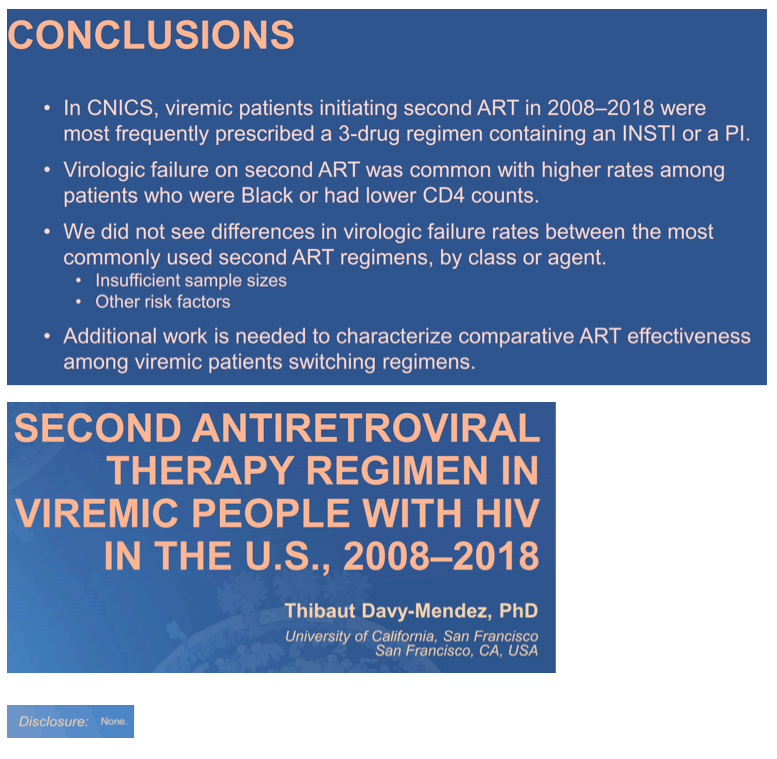
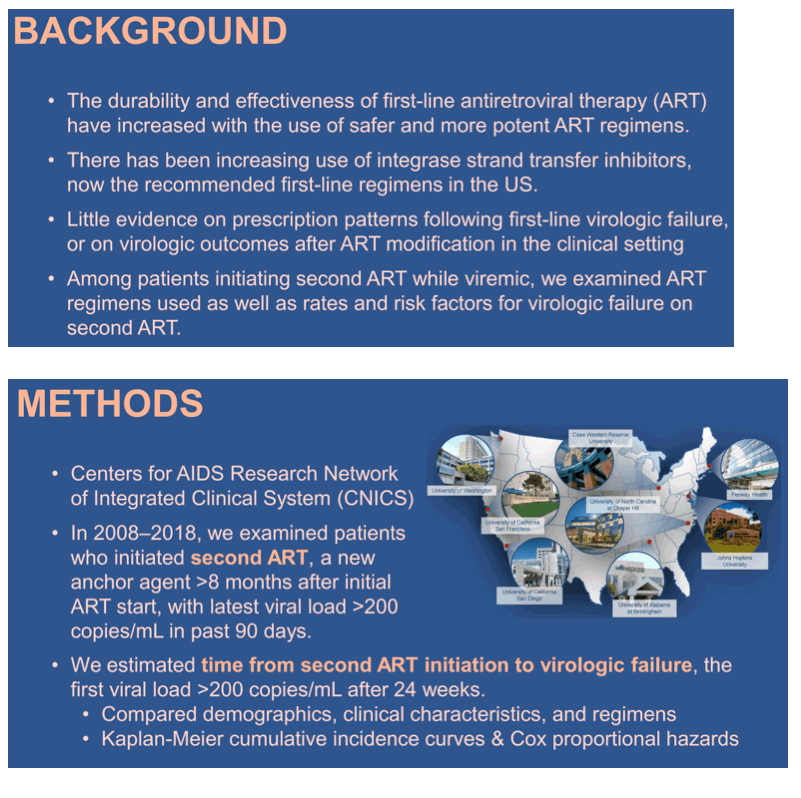
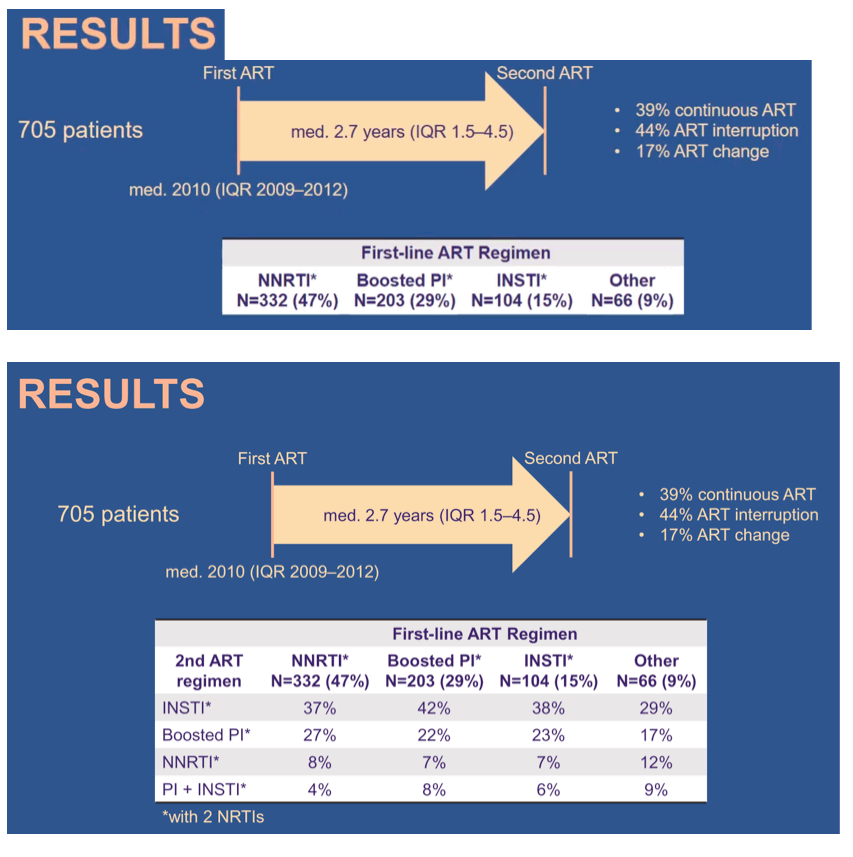
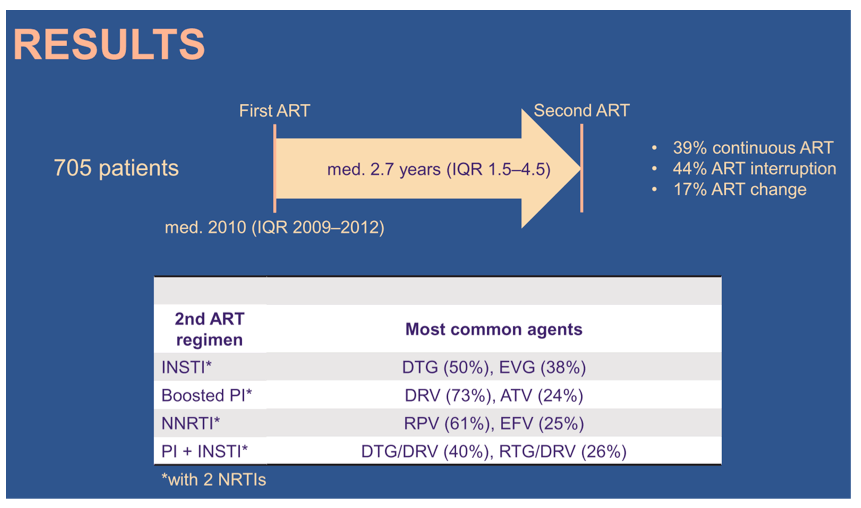
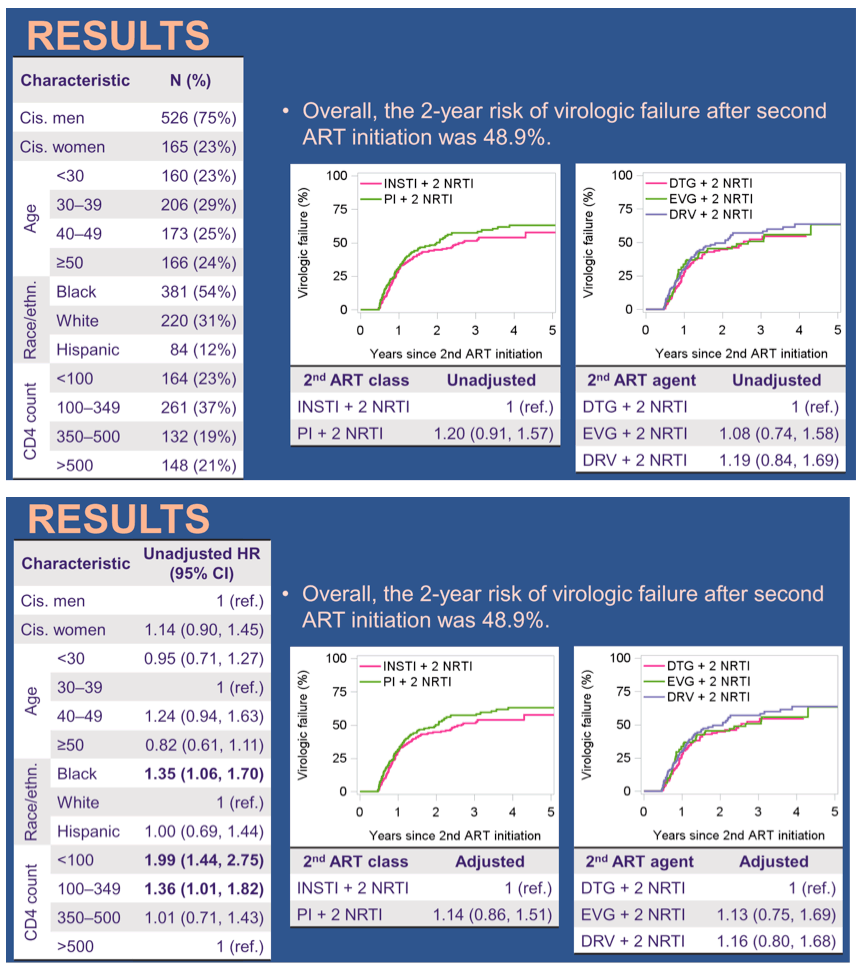
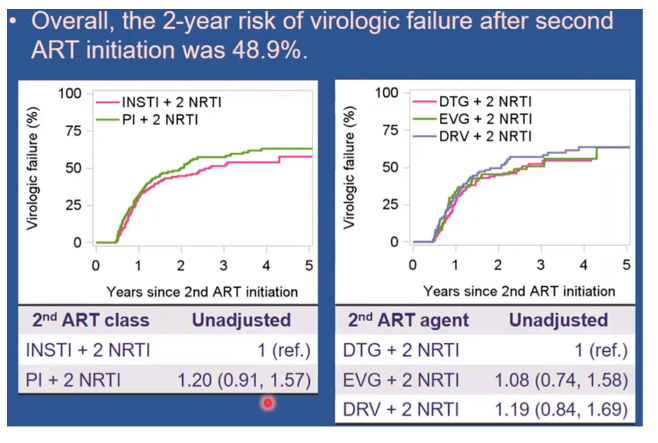
|
| |
|
 |
 |
|
|